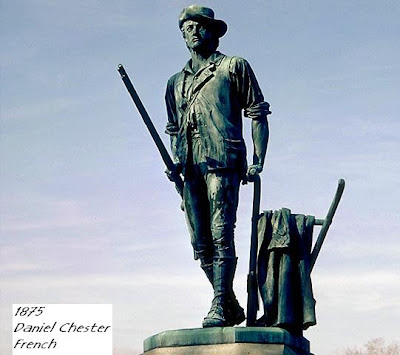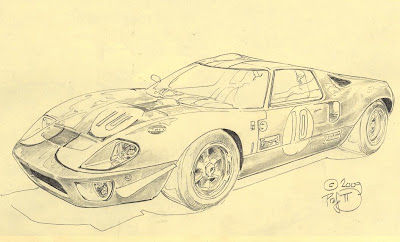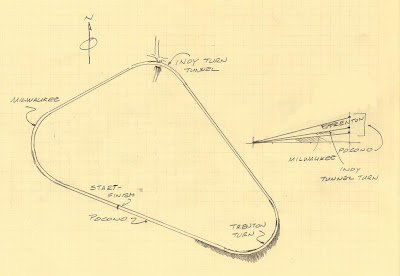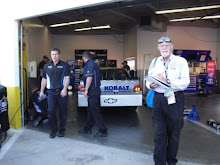 In 1956 we (the US of A) were on a roll, we’d won the war (the BIG one, WW II), we made more steel, cars, airplanes, TV’s, telephones, movies, radios, OIL, and just about every thing else than any other country in the world. And, we’d just launched the world’s first nuclear submarine.
In 1956 we (the US of A) were on a roll, we’d won the war (the BIG one, WW II), we made more steel, cars, airplanes, TV’s, telephones, movies, radios, OIL, and just about every thing else than any other country in the world. And, we’d just launched the world’s first nuclear submarine.The 1953 Buick Road Master—the name alone, Road Master, symbolized the era; at two and a half tons with a huge V-8 engine and an ultra smooth hydro-slush transmission it made a Greyhound bus seem like a nimble sporty drive by comparison. The car was so heavy and the ride was so smooth you could run over a concrete mixer and not notice it. We couldn’t make cars big enough, and we didn’t grasp the idea that there were limits to much of anything.
We had gasoline price wars, where filling stations would lower the price of gasoline to lure customers. In 1956, when Big Bill was planning the Big Track, during a price war in Cedar Rapids, Iowa, I filled up my ’47 Ford with gasoline, and took my date to Dairy Queen for malts, all on $2.35; gasoline was $0.09 a gallon.
We had gasoline price wars, where filling stations would lower the price of gasoline to lure customers. In 1956, when Big Bill was planning the Big Track, during a price war in Cedar Rapids, Iowa, I filled up my ’47 Ford with gasoline, and took my date to Dairy Queen for malts, all on $2.35; gasoline was $0.09 a gallon.
And if gasoline was inexpensive, nuclear power was going to make electricity so cheap it wouldn’t pay the utilities to even meter it; in fact, we started designing nuclear powered everything: including cars.
 The Daytona International Speedway mascot drawing is of a Ford Nucleon concept car circa 1956, and that thing which looks like a glorified spare tire cover on the back is actually the vent for a nuclear reactor. If you thought Ford had a problem with Pinto gas tanks, imagine a few million cars running around each with an unregulated nuclear reactor in the trunk. To understand the USA in the 1950’s you must realize that at the time we thought this was a good idea. A friend of mine worked at Westinghouse Nuclear, the company that built the reactor for the Nautilus, the first nuclear sub, they really were working on designing nuclear powered cars, trucks and trains. We were totally convinced that technology could solve all of our problems; we’d move to Florida or California and go surfing at least four days a week. Surfers were the icon of a carefree life; and the seemingly unlimited power of a nuclear engine symbolized our belief that we could run roughshod over everyone and everything. The term “ugly American” wasn't entirely undeserved.
The Daytona International Speedway mascot drawing is of a Ford Nucleon concept car circa 1956, and that thing which looks like a glorified spare tire cover on the back is actually the vent for a nuclear reactor. If you thought Ford had a problem with Pinto gas tanks, imagine a few million cars running around each with an unregulated nuclear reactor in the trunk. To understand the USA in the 1950’s you must realize that at the time we thought this was a good idea. A friend of mine worked at Westinghouse Nuclear, the company that built the reactor for the Nautilus, the first nuclear sub, they really were working on designing nuclear powered cars, trucks and trains. We were totally convinced that technology could solve all of our problems; we’d move to Florida or California and go surfing at least four days a week. Surfers were the icon of a carefree life; and the seemingly unlimited power of a nuclear engine symbolized our belief that we could run roughshod over everyone and everything. The term “ugly American” wasn't entirely undeserved. As big and outlandish as the Daytona International Speedway now seems, and totally over whelmed by technology, it was a perfectly reasonable idea in 1956.
As big and outlandish as the Daytona International Speedway now seems, and totally over whelmed by technology, it was a perfectly reasonable idea in 1956. Build a track where race cars could go as fast as the engineers could invent motors to propel them, and the drivers had the nerve to keep their foot down. Same track length as the Indy 500 (2.5 miles per lap), but with two sweeping turns, and banked as steeply as could be paved with the technology of the day (31 degrees). If you’ve visited Charlotte, Atlanta and/or Texas, the tracks at 1.5 miles per lap seem incredibly huge, but they’re dwarfed by Daytona.
Talk about contrasts: from last week at New Hampshire a 1 mile track, and nearly flat (2 to 7 degree banking) to Daytona, 2.5 miles and about as steep as a mixing bowl (31 degrees). It is as far around the perimeter of Lake Lloyd in the Daytona infield as it is around the New Hampshire track.
And Daytona was indeed off to the races: faster and faster every year, until 1970, when NASCAR realized things (in fact the engineers and engine builders) were getting out of hand.
Detroit was producing engines with more than 400 cubic inch displacements, some were approaching 500, and at 195 mph the race cars were not staying on the ground. Old adage in engineering: given enough power you can make a lead brick fly.
 Bobby Isaac won the NASCAR Cup Championship in 1970 and earned less than I did as a junior project engineer in a not very big steel company. A “well funded” NASCAR team had a sponsor, as in ONE, and a car, as in ONE. Isaac’s car still had windshield wipers on it, these were stock cars, even if Smokey Yunick did make a seven-eighths scale Chevy one year; sure had a lot less drag than everyone else had.
Bobby Isaac won the NASCAR Cup Championship in 1970 and earned less than I did as a junior project engineer in a not very big steel company. A “well funded” NASCAR team had a sponsor, as in ONE, and a car, as in ONE. Isaac’s car still had windshield wipers on it, these were stock cars, even if Smokey Yunick did make a seven-eighths scale Chevy one year; sure had a lot less drag than everyone else had.
After a couple years of experimenting, NASCAR settled on the 358 cubic inch rule for engines in 1974, and there it has remained for 35 years.
Daytona International Speedway is completely out of the park in terms of size and banking (only other track in this league is Talladega); it dwarfs even the Michigan track, DIS is simply off the charts.
Daytona International Speedway is completely out of the park in terms of size and banking (only other track in this league is Talladega); it dwarfs even the Michigan track, DIS is simply off the charts.
In 1956 no one thought the engineers could ever build a car fast enough that a driver would have to lift off the throttle, or that the cars would need to be limited in speed so as to not have them hurtling into the grandstands.
There's a "neutral" speed for a car on any turn of a banked oval track, the speed at which there is no side force on the car, neither up-hill or down, the rides around the turn only being pushed down squarely on all four tires.
 The centripetal force tending to make the car slide uphill to the outside of the turn is just equal to the down-hill force (the pull of gravity) that is would make the car slide into the infield. Bigger tracks with a larger radius at any given banking angle allow for higher speeds. This graph illustrates the effect of turn radius on neutral speed as a function of banking angle.
The centripetal force tending to make the car slide uphill to the outside of the turn is just equal to the down-hill force (the pull of gravity) that is would make the car slide into the infield. Bigger tracks with a larger radius at any given banking angle allow for higher speeds. This graph illustrates the effect of turn radius on neutral speed as a function of banking angle.Even at 31 degree banking the neutral speed at Daytona is less than 100 mph. At any speed faster than the neutral speed, the tire friction must hold the car and prevent it from sliding up-hill and off the track, or into the outside wall. If the tire-track coefficient of friction is 0.8 then one can calculate the maximum speed a car can go around any turn, if you know the radius and the banking.
 The coefficient of friction is approximately the ratio of the force required to pull a car sideways divided by the weight of the car.
The coefficient of friction is approximately the ratio of the force required to pull a car sideways divided by the weight of the car.Coefficient of friction ordinarily varies between 0 and 1; good, new clean tires on a smooth asphalt highway and a passenger car tire might have a coefficient of friction of 0.6, on wet, smooth ice the coefficient of friction is less than 0.05, nearly 0. Hot, new, race tires on smooth asphalt may be 0.8 or 0.9.
 The graph illustrates that the maximum sustainable speed through the turns at Daytona are on the order of 200 mph with optimal tire traction, somewhat above the speeds now encountered with restrictor plates. But as the tires wear and friction decreases (lower friction values in the graph) the cars are capable of going at the very limit of the tires, and beyond, which is where the driver skill part of the equation comes into play.
The graph illustrates that the maximum sustainable speed through the turns at Daytona are on the order of 200 mph with optimal tire traction, somewhat above the speeds now encountered with restrictor plates. But as the tires wear and friction decreases (lower friction values in the graph) the cars are capable of going at the very limit of the tires, and beyond, which is where the driver skill part of the equation comes into play.Adhesion of the car to the track is improved by adding down force, in the form of aerodynamics, the shape of the car and its attitude (pitch of the car, nose down), which acts to push down on the car.
An airplane wing is designed to lift the craft off the ground, race cars are intended to be inverted airplanes where the aerodynamic shape is intended to add down force to the car and push it down and increase the load on the wheels—making the tires stick better to the track.
 The keys to running well at Daytona can be distilled down to two elements: (1) the right set-up so that all four tires work almost equally, thus minimizing the rate at which the tire adhesion decays with laps.
The keys to running well at Daytona can be distilled down to two elements: (1) the right set-up so that all four tires work almost equally, thus minimizing the rate at which the tire adhesion decays with laps. How far down the purple line, at 31 degree banking, does your car degrade as the laps build up? The car with the best combination of springs, shocks and sway bar will have the best tires and the driver can maneuver the car where they want, following the draft at will.
(2) The second key element for Dayton is "The draft," several cars in line have less drag than the same number of cars running individually.
To a large extent the closer the cars are together the better, aerodynamically at least; up to the point where they touch and then it’s not such a great idea.
With restrictor plates limiting the power and hence speed of the cars, the aerodynamic down-force on the cars is actually secondary to the banking of the track. In order to keep the cars on the ground and out of the grandstands it is necessary to reduce or limit the power, consequently speed, that can now be produced by a 358 cubic inch engine, albeit an archaic design at that.
By 1970 the engineers and engine builders had trumped the concept of big high banked track designs, just eleven years after the first race at Daytona. A 358 cubic inch engine is equal to 5.87 liters, nearly twice what is allowed in F1 (3.0 liters) and yet the F1 cars go faster because they develop nearly twice the power of a NASCAR Cup engine. But F1 cars have a huge down-force from their wings, more than three times the weight of the car, compared to a down-force of less than one-fourth the weight of a NACSCAR Cup racer. With NASCAR Cup cars in their current configuration, DIS is a dinosaur: run over by technology.
By 1970 the engineers and engine builders had trumped the concept of big high banked track designs, just eleven years after the first race at Daytona. A 358 cubic inch engine is equal to 5.87 liters, nearly twice what is allowed in F1 (3.0 liters) and yet the F1 cars go faster because they develop nearly twice the power of a NASCAR Cup engine. But F1 cars have a huge down-force from their wings, more than three times the weight of the car, compared to a down-force of less than one-fourth the weight of a NACSCAR Cup racer. With NASCAR Cup cars in their current configuration, DIS is a dinosaur: run over by technology.
Can NASCAR re-invent racing, and make tracks such as Daytona and Talladega relevant again?














































